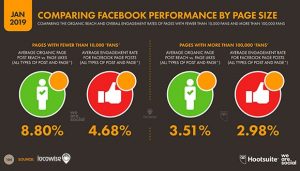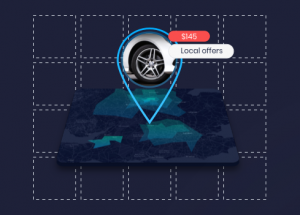Asking 100 questions to build a buyer persona is helpful – for a brand new marketer who knows nothing about their audience.
But if you’ve been at this for even a little while, you already have answers to nearly all these questions.
In ecommerce, you don’t have to overthink your buyer personas. Here are the only five questions you really need.
1. What are your audience’s pain points, and how can your product address them?
Pain points are the issues and challenges that keep people up at night, but they don’t have to be so serious.
Here are a few of examples of pain points and product solutions for ecommerce:
- If they don’t buy your quirky office decorations, they won’t have a conversation starter with their new clients.
- If they don’t have your wireless headphones, there’s no way to watch Netflix without waking the five-year-old.
- If they don’t buy this plush pet cushion, they’ll never convince the cat to stay off their bed.
Understand the daily challenges your target audience faces and position your products as a solution.
2. What media do they consume?
Effective content marketing depends on finding the right distribution channels. And understanding what media your target audience consumes and where they go for information makes it easier to provide them with valuable content.
- What blogs do they follow?
- What TV channels do they watch?
- What magazines do they read?
- What are their favorite news outlets?
Understanding their favorite social channels probably gives the most opportunity to target and save time. The Pew Research Center did some research into the demographics of different social channels that you can use:

Figure out which social platforms your target audience uses most and make your presence there the strongest.
3. What (or who) influences their choice of vendor?
There are a lot of factors that play into a person’s choice of vendor. Identify the key influencers of your target audience, such as:
Reviews
These matter for nearly every online shopper. According to Marketing Land, 90% of people say positive online reviews influence purchasing decisions.

Social Media
Seventy-four percent of consumers depend on social media to guide their purchases today. Is your audience among them?
If your audience is turning to social media to make purchase decisions, you need to make extra efforts to illustrate your product and its benefits on these platforms.
Thirty-nine percent of Facebook users like brand pages so they can research different products. Take advantage of this kind of consumer research to optimize your marketing.
Recommendations From Others
If recommendations from friends and family are the biggest drivers of your audience’s purchase decisions, testimonials will be central to your marketing campaign.
You can also implement a rewards program that encourages current customers to recommend your products to others (e.g., invite a friend to create an account and get 10% off your next purchase).
Identifying the most important influencers for your target audience will help you optimize your content and distribution efforts down the road.
4. How can you appeal (uniquely) to their goals and values?
E-commerce is a growing market, and it’s likely you have plenty of competitors out there targeting the same audience.
Rather than taking on the same strategy as them and hoping for the best, it’s better to develop a unique selling proposition that sets you apart from your competitors.
Do this with a lot of competitor research, then find your own unique way to speak to your audience. You can:
Find what’s unique about your product.
Compare your product’s benefits to that of your competitors, and identify what makes yours unique.
You might not come up with much here, but that’s okay. Lots of ecommerce sellers have more or less identical products and compete on price alone.
Use online shopping pain points.
You can also take advantage of some of the common pain points consumers have about shopping online:
- Fear of buyer remorse – Offer a money-back guarantee
- Lengthy delivery times – Offer free next-day shipping
- Fear the clothes won’t fit – Integrate a virtual dressing room

Dig deeper into their goals and values.
I think the most impactful method is to dig into your audience’s values and goals outside of shopping.
For example, say millennial parents are a big part of your target audience. It turns out 50% of them try to buy products that support causes or charities.
Incorporate a charity donation program into your ecommerce site, and you have a powerful USP that shows your audience why they should buy from you instead of your competitors.
5. What are your audience’s expectations from you?
This question matters for getting customers and for retaining them. Identify what factors create a great experience for your unique audience so they’ll become loyal, repeat customers.
There’s a lot of variability in what makes people love a business:
- According to Nielsen-McKinsey, 17% of consumers would recommend a brand that provides a slow but effective solution.
- However, 33% of consumers would recommend a brand that provides a quick but ineffective response.

Understanding your audience’s expectations will help you optimize your user experience for their needs.
Done right, this effort simplifies the purchase process, encourages sales, and turns repeat customers into loyal, long-term buyers.
Know any other essential questions for building e-commerce buyer personas? Comment below:
Images: Pewinternet, Marketing Land, Zugara, Receiptful
Digital & Social Articles on Business 2 Community(44)








